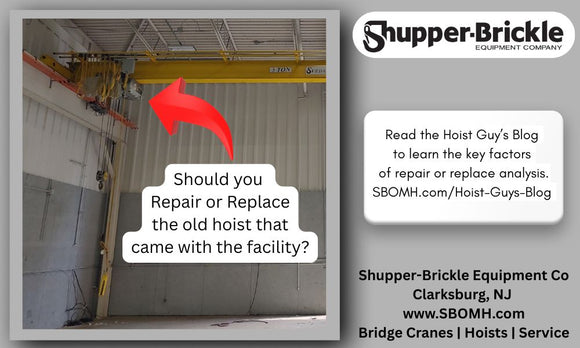
The Top Five Rules of Overhead Material Handling for Architects, Engineers & Planners
Andrew T. Litecky
Welcome to The Hoist Guy's Blog, where our resident Hoist Guy Andrew T. Litecky shares his knowledge and experience of many years in the overhead material handling industry. Today he has a few tips for architects and engineers who have to deal with an overhead crane system.
Overhead Material Handling Systems
An overhead crane system is often one small piece of an A&E project, but don't underestimate its ability to throw the job off schedule. Read our top five rules of hoists & cranes for architects & engineers for ensuring this part of the job runs smoothly.
Five Overhead Crane Rules for Architects & Engineers
5) Give your customer what they want. Always tailor the specified overhead material handling equipment to the needs and usage of the customer's application. This may sound like a given, but beware the allure of time and money saved in using a pre-formulated or recycled specification.
4) First things first. If you’re ever in a long planning and scheduling meeting, please share the following: The bridge crane and the hoists always go in before the HVAC, plumbing, sprinklers, electrical conduit, cable trays or lights. It is amazing how many times we have seen this rule ignored, and how many HVAC ducts, pipes, sprinkler heads, conduit, cable trays and lights that have had to be moved in order for the bridge crane or monorail hoist to operate. Everyone involved in the project should keep this rule in mind.
3) A picture is worth a thousand words. Request an isometric drawing from your crane vendor, showing the spans, clearances, configurations and hook coverage. The isometric drawing is the engineer's best tool when trying to explain hoists and cranes to a customer.
2) Knowledge is Power. Take the time to learn about the equipment required for the job or hire an experienced vendor partner and rely on their expertise. Overhead Crane vendors come in all sizes, but firms with crane engineers on staff are better prepared to assist should a problem arise.
1) Garbage in… Garbage Out. No matter what else you do, start with a good, clean specification. This includes scope of supply, precise measurements, and environmental conditions – all details where small changes make a huge difference in the timeline and cost. Your efforts beforehand will be directly reflected in the end result and the customer’s satisfaction.
Overhead Material Handling Support for Architect & Engineering Firms
Shupper-Brickle Equipment supplies overhead material handling equipment, including custom-built bridge cranes. We have extensive experience working with A&E firms, and our in-house engineering department can answer any technical questions on hoists, overhead cranes, and monorails. Learn more about our engineering services and innovative designs. See also our free bridge crane specification.


